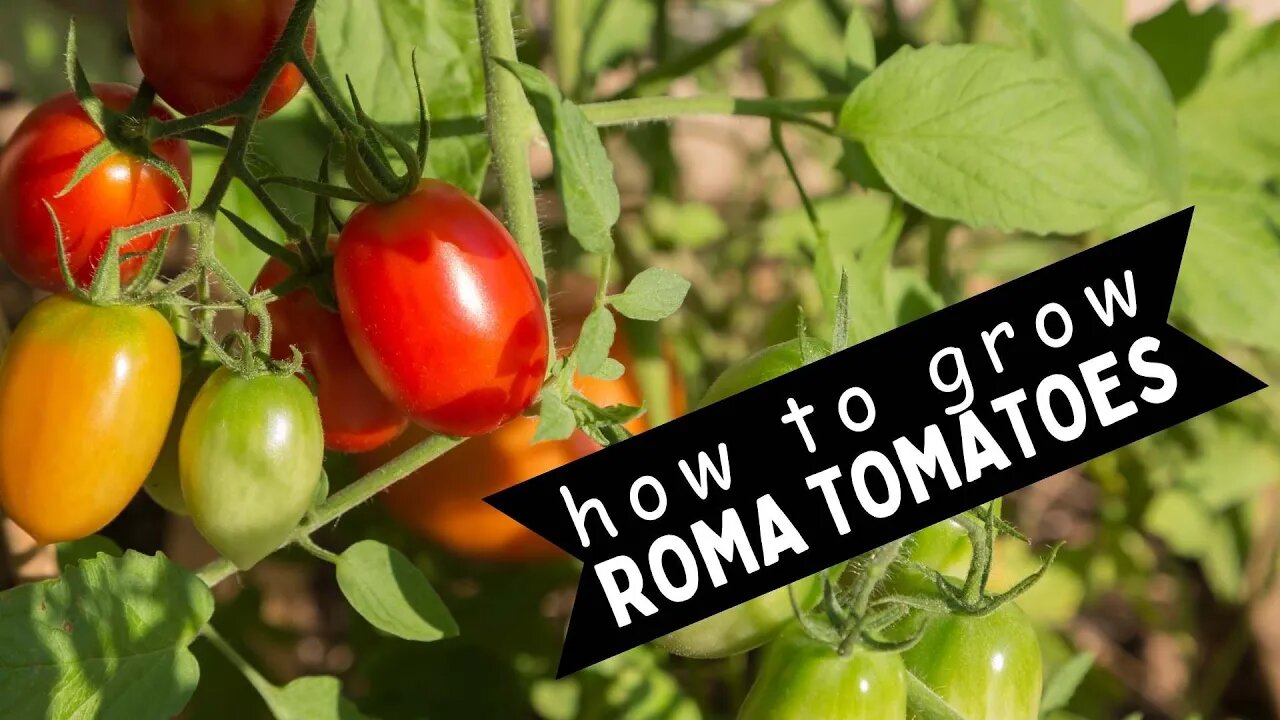Premium Only Content

ROMA TOMATOES: Bountiful Harvest Tips, Grow in the Ground or in a Container Garden
The Roma tomato plant, Latin Solanum lycopersicum 'Roma,' is a determinate tomato plant widely grown for its flavorful and meaty fruits. They're ideal for making sauces, pastes, and canning. It is a beloved variety of tomato plant due to its productivity and disease resistance.
Roma tomato plants typically grow to a mature height of 3 to 4 feet and have a compact, bushy habit. They produce oblong-shaped fruits about 3 inches long and 1.5 to 2 inches wide, with thick flesh and few seeds.
When ripe, the fruits are deep red and have a slightly sweet, tangy flavor.
The Roma tomato plant is relatively easy to grow and requires full sun and well-drained soil. It is a determinate plant, producing a large crop of tomatoes over a relatively short period, typically within one to two weeks. After this initial harvest, the plant will produce only a few new tomatoes.
This content will share information about how to use Roma tomato plants, when to harvest them, and how to grow and maintain them. We will also take a brief look at Roma tomatoes versus plums--similar in looks but different in uses. Let's explore this beautiful fruit.
Roma Tomatoes Are a Highly Versatile Fruit.
Roma tomato plants are a home garden favorite, as well as commercial tomato fields. Harvest them when the fruits are fully ripe, although they can be picked when slightly green and allowed to ripen off the vine. They are helpful in tomato paste, sauces, and other tomato-based products and adding flavor and texture to salads, sandwiches, and other dishes.
Growing the Roma Tomato Plant.
Roma tomatoes are a warm-season crop that grows best in USDA plant hardiness zones three to eleven, with a minimum temperature range of 50 to 60 degrees Fahrenheit. They require total sun exposure, at least six to eight hours of direct sunlight daily, and well-draining soil with a pH level between 6 and 7.
To plant Roma tomatoes.
Prepare the soil by adding compost or mature manure to improve soil structure and fertility.
Plant seeds indoors about six to eight weeks before the last frost in your area. Transplant the seedlings outdoors once the soil has warmed up and all danger of frost has passed.
Space the plants about two to three feet apart and provide support for them to grow upright.
Connect with us:
Facebook: https://www.facebook.com/TayloesLawnCare
Web: https://www.tayloeslawncare.com
MeWe: https://mewe.com/p/diyhomegarden
Image and music licensed via Canva Pro
-
 0:56
0:56
Garden Revelations
2 years agoPansies: The perfect way to add color to a fall garden (lasting to early winter in North Carolina)
111 -
 LIVE
LIVE
Phyxicx
10 hours agoBack to FF8 - Let's actually play the story now! - 11/23/2025
128 watching -
 19:19
19:19
GritsGG
15 hours agoINSANE Trio Match! Most Winning Warzone Player IGLs to Victory!
14.6K1 -
 32:24
32:24
Forrest Galante
1 day agoHunting and Eating The World's WORST Fish (Everglades At Night)
132K9 -
 11:37
11:37
The Pascal Show
1 day ago $14.45 earnedTHEY WANT TO END HER?! Candace Owens Claims French President & First Lady Put A H*t Out On Her?!
55.7K51 -
 LIVE
LIVE
Lofi Girl
3 years agolofi hip hop radio 📚 - beats to relax/study to
270 watching -
 35:40
35:40
The Why Files
5 days agoPsyops: From Dead Babies to UFOs - The Same Pattern Every Time
120K107 -
 1:48:26
1:48:26
Tucker Carlson
2 days agoKristen Breitweiser: 9-11 Cover-Ups, Building 7, and the Billion-Dollar Scam to Steal From Victims
190K422 -
 5:48
5:48
Russell Brand
2 days agoThey BURNED me in effigy!
73.7K45 -
 1:21:40
1:21:40
Man in America
10 hours agoThe Secret AI Plan to Enslave Humanity — And Why It Will FAIL w/ Todd Callender
57.8K25